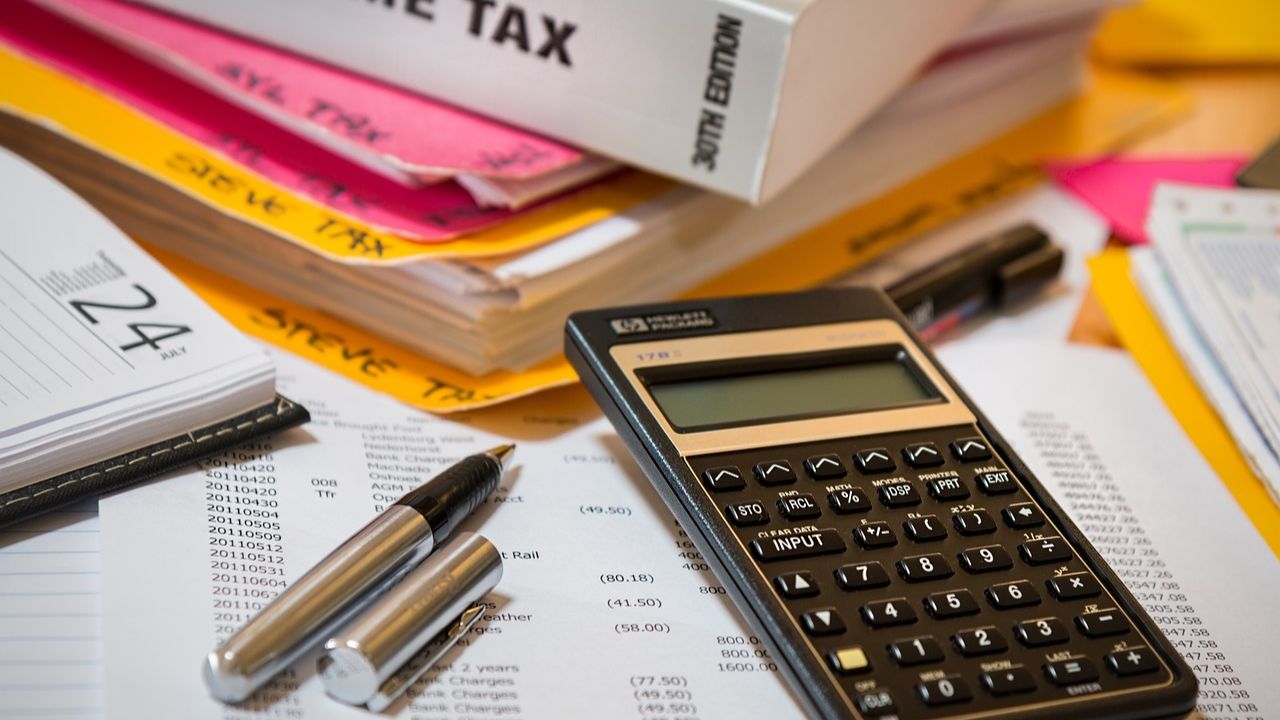Background
Currency exchange (also known as foreign exchange or forex) is a process of converting one country’s currency into another. It involves the trading of currencies in the foreign exchange market, where the value of one currency is determined relative to another. As an example, The dollar-to-rupee exchange rate indicates how many Indian Rupees (INR) are needed to purchase one US Dollar (USD). For instance, if the exchange rate is 1 USD = 75 INR, it means one US dollar can be exchanged for 75 Indian rupees.
The dollar-to-rupee exchange rate is a critical indicator of India’s economic health due to the predominant use of the USD in India’s foreign trade transactions. This rate also helps the Indian govt. in structuring the global economic landscape, particularly in international trade and investment. Moreover, A stronger dollar relative to the rupee can make US goods more expensive for Indian consumers, potentially reducing US exports to India. Conversely, a weaker dollar can make US goods cheaper, boosting exports but potentially increasing inflation in India if demand for imported goods rises.
Several methods are used to determine exchange rates, including fixed, floating, and managed float systems. Historically, India has adopted a managed float system where the Reserve Bank of India intervenes to stabilize the currency market when necessary. This ensures a balance between maintaining exchange rate stability and allowing market forces to determine the value of the rupee.
The USD to INR exchange rate is closely monitored by economists, policymakers, and investors due to its significant impact on trade balances, foreign investment flows, and overall economic stability. Changes in exchange rates can influence investment decisions, corporate earnings, and government policies aimed at regulating trade imbalances, underscoring the profound influence of economic policies on the exchange rate.
Manmohan Singh: The Economist Prime Minister
Manmohan Singh, who served as India’s Prime Minister from 2004 to 2014, is widely recognized for his contributions as an economist. Before becoming Prime Minister, Singh served as the Finance Minister in the early 1990s, a period marked by economic liberalization in India. His tenure as Finance Minister saw the dismantling of the License Raj, opening up the Indian economy to foreign investment, and introducing significant reforms that set the stage for sustained economic growth. Under Singh’s prime ministership, India experienced robust economic growth, with GDP growth rates often exceeding 8%. His policies focused on liberalization, modernization of financial markets, and fostering foreign direct investment (FDI). However, Singh’s latter years were marred by economic challenges, including a high fiscal deficit, inflation, and a slowdown in growth.
Narendra Modi: The Reformist Prime Minister
Narendra Modi, who assumed Prime Minister’s office in 2014, has brought a different approach to economic management, emphasizing structural reforms, digitalization, and a stronger push for “Make in India” to boost manufacturing and reduce reliance on imports. Modi’s tenure has been marked by ambitious initiatives such as the Goods and Services Tax (GST), demonetization, and efforts to improve the ease of doing business in India. Under Modi’s leadership, there has been a significant push towards increasing FDI, improving infrastructure, and fostering a digital economy.
While Singh’s tenure focused on consolidating India’s position as an emerging market economy through liberalization and globalization, Modi’s era has been characterized by bold reforms aimed at transforming the economic landscape. Singh’s policies laid the foundation for economic stability and growth, while Modi’s initiatives are aimed at making the economy more resilient and self-reliant.
What are the factors that influence the conversion rate between the USD and INR?
There are several domestic and international factors which have been influencing the exchange rate between the US dollar (USD) and the Indian rupee (INR) for a long time. These factors can be broadly categorized into economic fundamentals, market sentiment, and external influences.
1. Economic Indicators
Higher inflation in India relative to the US tends to depreciate the rupee. Inflation erodes a currency’s purchasing power, making goods and services more expensive, which can lead to a decline in the currency’s value. Interest rate differentials between the US and India impact capital flows. Higher interest rates in the US attract foreign capital, strengthening the dollar and potentially weakening the rupee. Conversely, higher rates in India can attract investment, supporting the rupee. Strong economic growth in India can attract foreign investment, bolstering the rupee. Conversely, if the US economy grows faster than India’s, the dollar might strengthen against the rupee. A trade deficit (importing more than exporting) can put downward pressure on the rupee, as more dollars are needed to pay for imports. A trade surplus can have the opposite effect.
2. Geopolitical Events
Political stability in India and the US can impact investor confidence. Political uncertainty or instability can lead to capital flight, weakening the rupee. Bilateral relations between the US and India, as well as India’s relations with other countries, can influence investor sentiment and currency flows. Global events such as wars, pandemics, and major geopolitical shifts can cause volatility in currency markets. For example, the COVID-19 pandemic led to significant fluctuations in exchange rates worldwide.
3. Market Sentiment
Currency traders’ speculations based on expected economic or political developments can drive short-term fluctuations in exchange rates. Global investors’ risk appetite affects emerging market currencies like the rupee. In times of global risk aversion, investors tend to flock to safe-haven assets like the US dollar, causing the rupee to depreciate.
4. Policy Decisions
The Reserve Bank of India (RBI) and the US Federal Reserve can influence exchange rates through monetary policy and direct interventions in the foreign exchange market. Government spending and taxation policies in India and the US can impact economic growth, inflation, and investor sentiment, influencing the exchange rate. Tariffs, trade agreements, and other trade policies can affect the flow of goods and services between the US and India, impacting the demand for their respective currencies.
5. External Economic Factors
India is a major importer of oil. Fluctuations in global oil prices can significantly impact the rupee. Higher oil prices increase India’s import bill, putting pressure on the rupee. Foreign Direct Investment (FDI) and Foreign Institutional Investment (FII) flows into and out of India influence the demand and supply of the rupee.
6. Technological and Structural Factors
Technological advancements in financial markets, such as algorithmic trading and blockchain technology, can affect currency trading dynamics and liquidity. Long-term structural reforms in India’s economy, such as labour market reforms, improvements in infrastructure, and digitalization, can enhance productivity and growth potential, supporting the rupee.
Dollar-to-Rupee exchange rate under Narendra Modi vs. Manmohan Singh era
Fig: 1
Over the past two decades, the value of the INR relative to the USD has experienced several fluctuations. From 45.5 INR/USD in 2004 to 83.2 INR/USD in 2024, the dollar-to-rupee exchange rate, depreciated by approximately 45.3%. Notably, since the end of September 2023, the exchange rate has consistently remained above 80 INR/USD (fig: 1).
Fig: 2
During Prime Minister Manmohan Singh’s tenure from 2004 to 2014, the exchange rate showed considerable volatility, with significant depreciation periods, particularly between 2008-2009 and 2013-2014. In his first term (2004-2009), the rupee depreciated from 45.5 to 49.7 INR/USD, marking an 8.4% depreciation. The second term (2009-2014) saw a more pronounced depreciation, with the exchange rate weakening from 47.6 to 61.1 INR/USD, indicating a substantial 21.1% depreciation. Overall, from 2004 to 2014, the rupee’s exchange rate depreciated from 45.5 to 61.1 INR/USD, constituting a total depreciation of 25.5%.
Fig: 3
The first major dip in his tenure occurred in 2009, following the 2008 financial crisis, leading to a depreciation of the rupee by approximately 10.2%. Subsequent dips occurred in consecutive years between 2012 and 2013, where the rupee depreciated by around 12.8% and 8.8% respectively, possibly influenced by the European sovereign debt crisis and the Arab Spring. During his final 2.5 years of leadership, the rupee fell by approximately 15.4 Rs.
Fig: 4
Under Prime Minister Narendra Modi’s leadership from 2014 to 2024, the rupee experienced a different trajectory with comparatively reduced volatility in the exchange rates. During his first term (2014-2019), the rupee weakened from 61 to 70.1 INR/USD, reflecting a 13.1% depreciation. The depreciation continued in his second term (2019-2024), with the rupee sliding from 70.6 to 83.2 INR/USD, resulting in a 15.2% depreciation. Overall, during Prime Minister Modi’s tenure, the rupee depreciated from 61 to 83.2 INR/USD, amounting to a 26.7% depreciation.
During Modi’s tenure, the largest dip in the USD/INR exchange rate occurred in 2022, driven by the post-COVID-19 crisis and the economic impact due to the Russia-Ukraine war, resulting in a depreciation of the rupee by approximately 5.9%. Additionally, following the demonetization of the Indian currency in 2016, the rupee has strengthened against the US Dollar, leading to an appreciation of the rupee by approximately 3.3% (fig: 2 – fig: 4).
Fig: 5
It is clearly visible that, the value of the rupee has depreciated under both Prime Ministers. However, the key question is whether this depreciation is due to the weak performance of the INR or the strong performance of the USD. Another important aspect for comparing these two PM’s performance in managing the rupee’s value against the USD is: How did these leaders perform under different levels of USD strength? To address these questions, we compared the US Dollar Index (DXY) with the USD/INR exchange rate. The US Dollar Index measures the value of the USD relative to a basket of six major currencies: the Euro, Japanese Yen, British Pound, Canadian Dollar, Swedish Krona, and Swiss Franc. An appreciation in the DXY indicates a strengthening USD, while depreciation indicates a weakening USD.
Fig: 6
During Prime Minister Manmohan Singh’s first term (2004-2009), the US Dollar Index decreased by 1.9%, yet the INR depreciated by 8.4% against the USD, which indicates that despite the USD weakening relative to other major currencies, the rupee still lost its value. In Singh’s second term (2009-2014), the US Dollar Index increased by 3.2%, and the INR depreciated significantly by 21.1%. In contrast, during Prime Minister Narendra Modi’s first term (2014-2019), the US Dollar Index increased by 15.1%, and the INR depreciated by 13.1%. In Modi’s second term (2019-2024), the DXY increased again by 6.8%, and the INR continued to depreciate by 15.2%.
Fig: 7
Overall, during Modi’s tenure, a significant appreciation of the US Dollar Index (24.1%) was observed along with a marked depreciation of the INR (26.7%), whereas in Singh’s tenure, despite a net decrease in the DXY by -7.6%, the INR still depreciated significantly by 25.5% (fig: 5 – fig: 7).
Over the entire period between 2004 to 2024, the INR consistently weakened against the USD, but the magnitude and contributing factors varied. Even though both the prime minister’s tenures present significant concerns due to the continuous depreciation of the Indian rupee relative to the USD, but Manmohan Singh’s tenure was more troubling due to the severe internal economic weaknesses highlighted by the rupee’s depreciation during a period when the dollar was weak. Manmohan Singh’s tenure can also be criticized for the high volatility in the USD/INR exchange rate. Notably, the most significant depreciation of the rupee relative to the USD in the last 20 years occurred during his second term.
Strategies for mitigating Indian rupee depreciation against the US dollar
To improve the situation of the Indian rupee’s depreciation against the US dollar, policymakers need to adopt a multi-faceted approach that addresses both immediate concerns and long-term structural issues. Here are several key strategies that can be considered:
1. Strengthening Macroeconomic Fundamentals
Maintain a stable inflation rate through prudent monetary policies. High inflation erodes purchasing power and weakens the currency. Reduce fiscal deficits by controlling government spending and increasing revenue generation. High fiscal deficits can lead to inflationary pressures and weaken the currency. Build and maintain adequate foreign exchange reserves to manage currency volatility and provide a buffer against external shocks.
2. Promoting Economic Growth and Stability
Implement structural reforms to enhance productivity, improve the business environment, and encourage investment. This includes labour market reforms, land acquisition reforms, and ease of doing business initiatives. Focus on diversifying export products and markets to reduce dependency on a few sectors or countries. A robust export sector can generate foreign exchange and support the currency.Attract foreign direct investment (FDI) by creating a favourable investment climate through policy stability, ease of business processes, and improved infrastructure.
3. Improving Trade Balance
Encourage the domestic production of goods to reduce reliance on imports. This can be achieved through incentives for domestic industries and investments in technology and infrastructure. Provide incentives for export-oriented industries, improve product quality, and explore new international markets. Trade agreements and partnerships can also enhance export opportunities.
4. Monetary Policy Management
Judiciously use interest rate policies to control inflation and manage economic growth. Interest rate differentials can impact capital flows and exchange rates. While maintaining a flexible exchange rate regime, the central bank can intervene in foreign exchange markets to curb excessive volatility and speculative attacks on the currency.
5. Strengthening Financial Markets
Develop deeper and more liquid financial markets to attract foreign investment and enhance market stability. Strengthen regulatory frameworks to ensure the stability and integrity of financial markets.
6. Enhancing Global Competitiveness
Invest in research and development and promote innovation to move up the value chain and improve global competitiveness. Improve education and skill development to create a more skilled workforce that can drive economic growth and attract investment.
7. Addressing External Factors
Engage in international cooperation to mitigate the impact of global economic fluctuations. Participate actively in global economic forums and trade negotiations. Strive for geopolitical stability in the region to reduce risks associated with geopolitical tensions, which can impact investor confidence and currency stability.
8. Public Communication and Confidence Building
Maintain transparency in economic policies and communicate effectively with the public and investors. Clear communication can build confidence and reduce market speculation. Ensure consistency and predictability in economic policies to build investor trust and encourage long-term investments.
By focusing on these comprehensive strategies, policymakers can address the root causes of currency depreciation, improve economic stability, and create a more resilient and competitive economy.
References
- Naqvi, S. M. J. (2021). Economic Policy Uncertainty and Dollar Rupee Exchange Rate Volatility. Available at SSRN 3768239.
- Panda, A. K. (2007). Forecasting Nominal Exchange Rate of Indian Rupee VS US Dollar. The ICFAI Journal of Applied Finance, 13(6), 66-79.
- Kulal, A., & Vishwanath, D. K. (2023). Dynamic Relationship Between Rupee-Dollar Exchange Rate and Major Economic Indicators. Abhinandan Kulal et al./American Journal of Economics and Business Administration, 15, 18-30.
- IMF data. (2024b, April 29). IMF. https://www.imf.org/en/Data
About Author: Pankaj Chowdhury is a former Research Assistant at the International Economic Association. He holds a Master’s degree in Demography & Biostatistics from the International Institute for Population Sciences and a Bachelor’s degree in Statistics from Visva-Bharati University. His primary research interests focus on exploring new dimensions of in computational social science and digital demography.
Disclaimer: The views expressed in this article are those of the author and do not necessarily reflect the views of 360 Analytika.
Acknowledgement: The author extends his gratitude to the International Monetary Fund and Yahoo Finance for providing data support.
This article is posted by Sahil Shekh, Editor at 360 Analytika.







